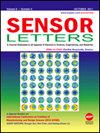Recent Insights into the Potential of Magnetic Metal Nanostructures as Magnetic Hyperthermia Agents
引用次数: 1
Abstract
The advancements in magnetic nanoparticle mediated hyperthermia give so many optimistic and fruitful results that make it a promising and complementary approach for the existing treatment modalities of cancer. This thermotherapy is gaining wide acceptance among the medical community compared to the conventional treatment methods. The former provides a local heat generation in the malignant tumor cells and remains non-invasive to the adjacent healthy cells. The increased heating efficiency of magnetic nanoparticles and the control of local therapeutic temperature are the main challenges of hyperthermia. Superparamagnetic Iron Oxide nanoparticles have been intensively studied and dominating in magnetic hyperthermia. Recently many researchers successfully demonstrated high heating efficiency and biocompatibility of a wide variety of magnetic metal nanoparticles and proposed as the most promising alternative for traditional iron oxides, which opens up a new avenue for magnetic metal nanoparticles in magnetic hyperthermia. The review presents the recent advancements that occurred in the field of metal nanoparticle mediated magnetic hyperthermia. The theory underlying heat generation, synthesis methods, biofunctionalization, Specific Absorption Rate studies, challenges and future perspectives of magnetic metal nanoparticles are presented. This will inspire more in-depth research and advance practical applications of metal nanoparticles in magnetic hyperthermia.磁性金属纳米结构作为磁热疗剂潜力的最新见解
磁性纳米颗粒介导的热疗的进步带来了许多乐观和富有成效的结果,使其成为现有癌症治疗方式的一个有希望和补充的方法。与传统的治疗方法相比,这种热疗法在医学界得到了广泛的接受。前者在恶性肿瘤细胞中提供局部热生成,并且对邻近的健康细胞保持非侵入性。提高磁性纳米颗粒的加热效率和局部治疗温度的控制是热疗的主要挑战。超顺磁性氧化铁纳米颗粒已被广泛研究并在磁热疗中占据主导地位。近年来,许多研究人员成功地展示了多种磁性金属纳米颗粒的高热效率和生物相容性,并提出了磁性金属纳米颗粒作为传统氧化铁的最有希望的替代品,这为磁性金属纳米颗粒在磁热疗中的应用开辟了新的途径。本文综述了金属纳米颗粒介导的磁热疗领域的最新进展。介绍了磁性金属纳米颗粒的热生成理论、合成方法、生物功能化、比吸收率研究、挑战和未来展望。这将激发更深入的研究和推进金属纳米颗粒在磁热疗中的实际应用。
本文章由计算机程序翻译,如有差异,请以英文原文为准。
求助全文
约1分钟内获得全文
求助全文
来源期刊

Sensor Letters
工程技术-电化学
自引率
0.00%
发文量
0
审稿时长
6 months
期刊介绍:
The growing interest and activity in the field of sensor technologies requires a forum for rapid dissemination of important results: Sensor Letters is that forum. Sensor Letters offers scientists, engineers and medical experts timely, peer-reviewed research on sensor science and technology of the highest quality. Sensor Letters publish original rapid communications, full papers and timely state-of-the-art reviews encompassing the fundamental and applied research on sensor science and technology in all fields of science, engineering, and medicine. Highest priority will be given to short communications reporting important new scientific and technological findings.
 求助内容:
求助内容: 应助结果提醒方式:
应助结果提醒方式:


